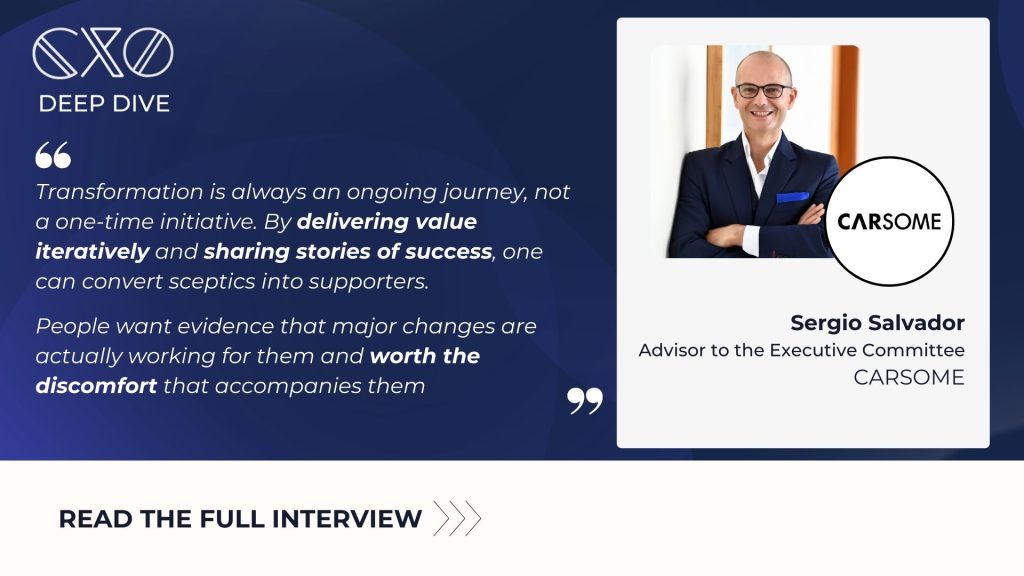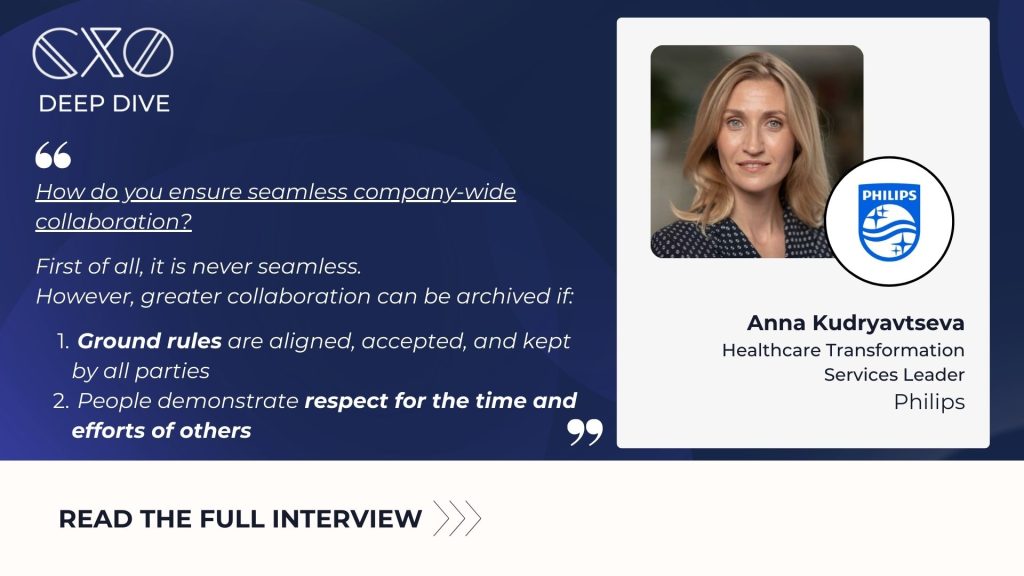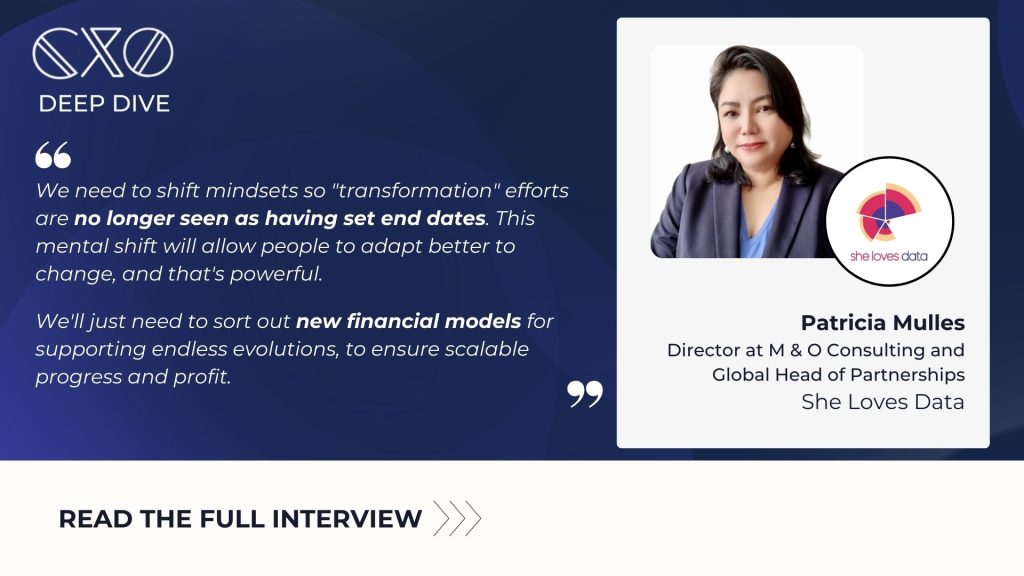Which digital tools, new and old, do you think are the best to tell your story?
- Digital Communities
- Webinars
- Podcasts
- Video Marketing
- Social Media
- Metaverse
- Other: audio, visual, and audiovisual tools for storytelling and direct customer engagement.
Is adopting a company-wide Customer-Centric approach a must for truly seamless customer service?
Yes, every department should align and adopt the customer-centric approach for this strategy to be a success.
With more consumers being conscious of their data being shared, how do you overcome this?
A company-wide customer-centric approach requires the right data (e.g., accurate, cleaned, and structured) from as many customers as possible.
Considering rising customer privacy concerns, international privacy laws (e.g., CCPA and GDPR), and increased value-for-data exchange expectations, companies should do the following to build up such a customer data repository:
- Offer customers (including prospects and users) easy-to-find information on how you collect, process, analyze, store, and update their data.
- Explain what customer data you desire, why this customer data matters, and how they will benefit from providing their data.
- Be clear about who (including actual and potential 3rd parties) will have access to the customer data you have collected and why.
- Provide customers with an active opt-in (and opt-out) solution to share (and stop sharing) some or all of the customer data you want.
- Lay out how a customer’s data can be viewed and/or destroyed.
- List the ultimate person or persons responsible (including their contact details) at your company for customer data and privacy.
- Always use easy-to-understand language, supported by imagery, icons, etc.
Too often, most or all of the above-mentioned information is hidden on a deep sub-page, in long texts full of jargon or legal/technical terms, and without addressing the customers’ key data and privacy concerns.
In summary, asking any customer for their data should be treated the same way as asking them for money for a product/service that is for sale.
How do you best maintain customer loyalty among the fierce competition?
To maintain and grow customer loyalty, companies should constantly evolve their products/services, their pre and post-sales services (e.g., customer success and customer support), their brands, and themselves.
Proactive evolution requires customer data and insights. The latter is the Return on Research Investment (RORI). Companies should research their target audiences and customers regularly to understand them better. The latter group could be segmented into new, churn, loyal, and advocating customers.
Research insights are key to developing effective products/services and effective marketing and advertising assets (e.g., ads/campaigns, content, and experiences). Therefore, companies should test before going to market to avoid confusing insights (why) with outcomes (what).
They should also complement prospect and customer data and insights with their employees’ experiences. Data-informed decision-making that incorporates both perspectives can be the ultimate growth driver. Finally, it could make sense for companies to consider collaboration or even co-creation with selected customer segments.
How does employee experience directly affect customer experience?
Employee Experience (EX) and Customer Experience (CX) are two sides of the same growth coin. Any investment in EX will also improve CX, in addition to the positive EX return on investment.
This is as simple as applying the adage “better safe than sorry” to investing in workers’ safety.
Moreover, an employee’s emotions are impacted by EX. The same employee will influence the emotions of the customers subsequently. The customer, like everyone else (including the employee), makes most of their decisions based on emotions. (I recommend reading about Daniel Kahneman and his System 1 vs. System 2 distinction here https://www.psychologicalscience.org/observer/thinking-fast-and-slow).
What is the role of Social Selling in the customer journey?
Social selling is one of three critical success factors for any organization. Content and EX/CX are the other two. Please note I am intentionally not listing the brand, the product/services, ESG investments, etc. to answer this question.
Content is what customers expect to find (i.e., owned, paid, earned, and user-generated) long before and in addition to when they engage with a company.
CX (i.e., infrastructure and experiences) is how customers find some of the above-mentioned content and engage with a company. EX is about the official person-to-person engagement.
Social selling matters because it extends the sales funnel (company’s perspective) and the customer journey (customer’s perspective) to a more personal, often unofficial because it is not utilizing the company-owned CX, relationship level. The buyer (prospect or customer) has the opportunity to critically assess the seller (the company) on a more personal and emotional level.
Social selling supports this focused view and personal interaction between two individuals. Social selling gives the buyer options to compare (or judge) corporate words and individual actions. This personal interaction, in a social (media) environment, is often the first and most important opportunity for the seller and buyer to establish trust. Although customers trust brands to various degrees, and ongoing efforts of hyper-personalization support this, trust on an interpersonal level has a different quality. This person-to-person connection also allows the buyer to engage with someone a little familiar which makes the essential emotional connection easier.
In summary, if you are not an active social seller you/your company will hardly succeed.
How AI will shape the future of CX?
I expect companies will use AI to further develop their CX offering based on unconscious customer-derived data. This means any unconscious data the customer has willingly provided. This data will not only complement conscious customer data and customer metrics (what) but provide strategic direction for evolutionary decision-making mentioned in response to a different CXO question.
I divide unconscious data (why) into two categories. Attention (System 0) and emotion (System 1). The first prerequisite for business growth is the customer’s attention. What do they pay attention to or not? The second prerequisite is the customer’s emotional response. How does the customer react emotionally to your offering, ad/campaign, content, or experience? Is it a desired or undesired reaction? 7 core emotions can be used to describe their emotional response. (I recommend reading about Elkman’s core emotions here https://www.paulekman.com/universal-emotions/)
Attention and emotion data captured, processed, and analyzed by AI will provide companies with effectiveness insights to change their products/services as well as assets (ads/campaigns, content, and experiences). Specifically, these insights will guide companies in uncovering the potential to save creative/content, production/ technology, media, personnel, etc. budgets while increasing customer value, marketing, advertising, CX KPIs, and ROIs. Attention and emotion data will help to explain the why on top of traditional what metrics.
Of course, this expected AI influence on the future of CX depends on companies (and governments) handling any ethical AI issue in the most responsible, transparent, and customer-value-focused way.
To monitor CX, what are the fundamental metrics that we should look at?
Companies should start generating, monitoring, and analyzing customer attention and emotion metrics across their CX environment (e.g., ads/campaigns and content created for traditional, digital, and social channels; websites and apps; their core products/services; customer success and customer support engagements, etc.).
Attention and emotion data and insights are fundamental and should complement the already established conscious and outcome-related ones.
Will customers be put off with brands that don’t use hyper-personalisation?
Even if hyper-personalization was possible for all customers, it would probably scare away many.
I think the right amount of personalization depends on how much each customer values their privacy and how much data they are willing to share with a company. I would argue that even with a broad willingness to share data, some form of hyper-personalization (e.g., referring to someone’s browsing history, I am not talking about simple retargeting) will end any (potential) customer-company relationship right away.
How to ensure you hear your customer loud and clear?
First things first, companies should establish a customer insights mindset as part of their customer-centric (or customer-obsessed) management approach to create a foundation for capturing, processing, analyzing, storing, and applying customer feedback constantly.
(I recommend reading about Lean Startup’s “Build-Measure-Learn” loop http://theleanstartup.com/principles and taking David Ogilvy’s advice: “Never stop testing, and your advertising will never stop improving.” https://twitter.com/Ogilvy/status/326477803430236161 to heart.)
Companies should diversify their ways to seek customer feedback, too. It is important to uncover and capture:
- Indirect and owned feedback (e.g., churn, product usage, upsell, cross-sell, renewal, referral, and advocacy data and insights)
- Direct and paid (e.g., attention, emotion, and survey data and insights)
- Direct and earned (e.g., social listening data and insights)
- Indirect and paid (e.g., competitor, tech developments, market research, culture and behavioral change data and insights)
Finally, direct customer feedback inquiries should not be obnoxious (e.g., placing NPS surveys at every customer touchpoint or posting 20+ question surveys with complex logic). Instead, customers should be rewarded and whenever possible be informed about the actions taken based on their feedback.
What are the opportunities for digitising the experience and lifecycle of existing customers (vs new buyers)?
Everything should be digital, based on the customers’ and new buyers’ expectations and its value-generating potential (for the buyer, for the company). In-real-life experiences should be added to complement these expectations and outcomes.
How to qualify what elements of CX journey requires AI/Machine learning?
This is a question of scale (i.e., what is the employee capable of?) and customer value (i.e., what is the resulting value for the customer?).
How do you pick the right channel to communicate effectively with your customers?
Companies should follow this channel checklist:
- Pick the one(s) the customers have already chosen.
- Invest in the one(s) chosen where you can most efficiently deliver customer value to establish the first company-customer foundation.
- Add the additional one(s) the customers prefer.
- Test, learn, and change the one(s) you use and how.
For outlying customer data, they often show relative or new insights compared to the bigger audience, how do we balance accommodating and catering to their needs?
Companies should segment their prospects (e.g., via marketing segmentation) and customers (e.g., via sales/customer success segmentation) to compare the initial predictive with the actual value of the insight. These two could be very different. Therefore, an investment to accommodate and cater to outlying needs might not be justified. However, if the outlying insights could enhance the roadmap (e.g., of products/services and CX) or provide access to a new segment of ideal prospects, a build-measure-learn approach should be considered.
How do you use data to optimise Customer Experience?
Companies have to capture the right data (e.g., accurate, cleaned, and structured) from as many customers as possible.
This data should include attention (System 0) and emotion (System 1) data. The first prerequisite for business growth is the customer’s attention. What do they pay attention to or not? The second prerequisite is the customer’s emotional response. How does the customer react emotionally to your offering, ad/campaign, content, or experience? Is it a desired or undesired reaction? It is best to not only get the raw but also visualized data and actionable insights.
If a company brings together creative and analytical teams, the above-mentioned data and insights can be used for data-informed decision-making. The teams can optimize CX effectiveness, reduce CX budgets (creative/content, production/technology, media, personnel, etc.), improve CX ROI, and even lower the public backlash risk.
Besides NPS, what are some other key metrics/ data points which can lead to better CX understanding?
I would like to highlight that NPS can not only lead to better CX but also limit its development and the resulting customer value.
In addition to many other established metrics concerned with the customer journey, funnel, revenue, retention, loyalty, advocacy, etc., I want to point out once more the growing importance of attention (System 0) and emotion (System 1) data and insights for data-informed decision-making. This is business growth decision-making that combines the expertise of creative (experience and intuition) and analytical (data and insights) teams.
Have anything to add?
I invite you to discuss my experience and perspectives shared and learn from you. Please get in touch with me on LinkedIn https://www.linkedin.com/in/sportislife/
Thank you!
Visit our content library for more: https://cxoinnovation.com/content-library/





